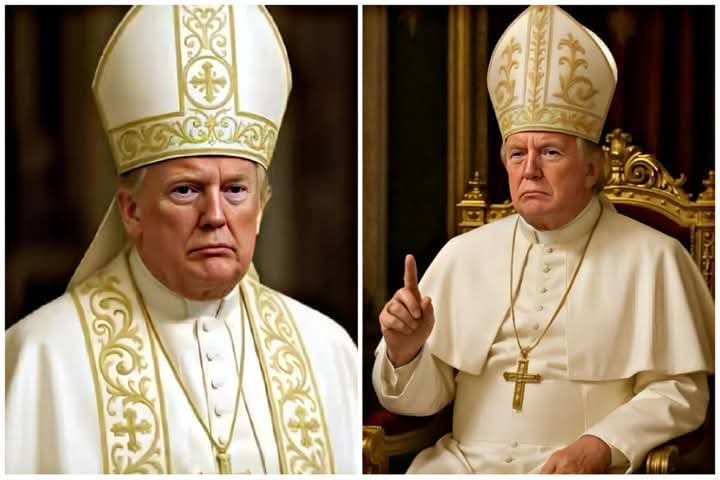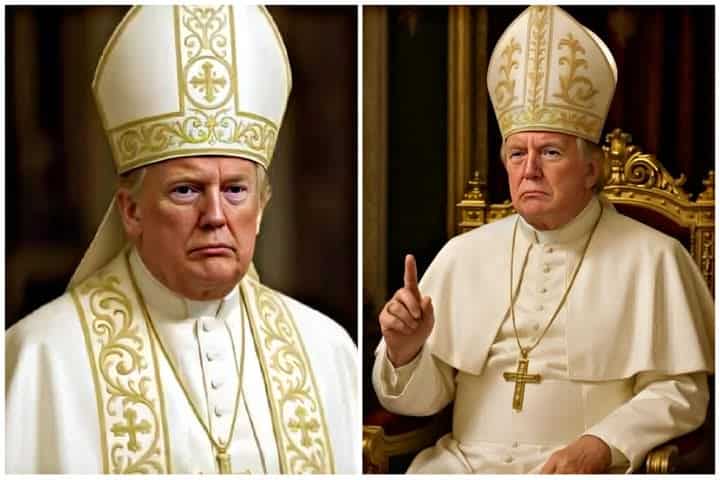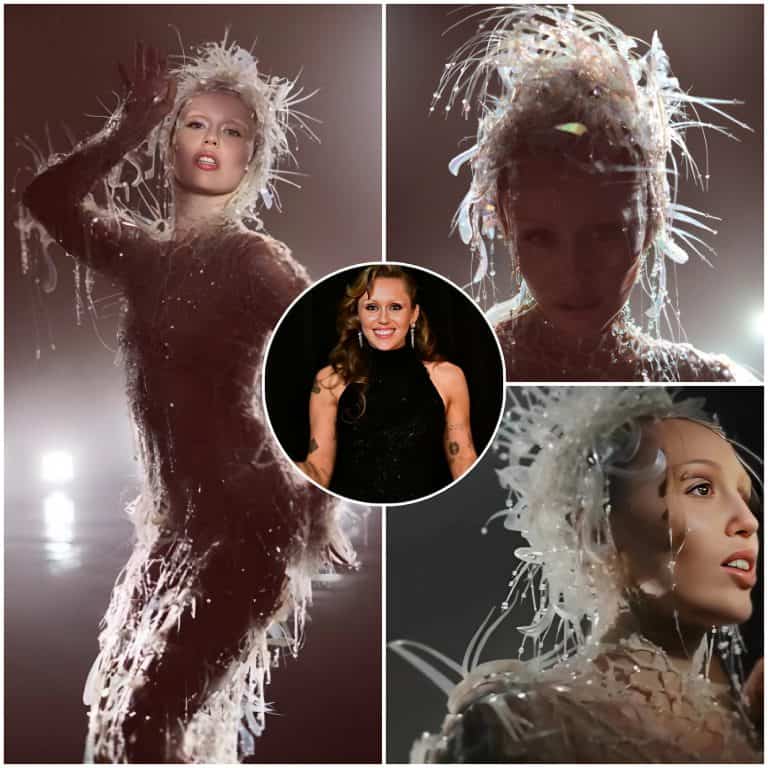Controversy Over Trump’s AI-Generated Image as Pope
In an era where technology continues to blur the lines between reality and fabrication, a recent AI-generated image depicting Donald Trump dressed as the Pope has ignited a firestorm of controversy across political, ethical, and digital landscapes. What started as a viral meme on social media has escalated into a heated debate over deepfake technology, misinformation, and the role of artificial intelligence in media manipulation.

The Image That Shocked the Internet
The now-infamous image, originally circulated on platforms like Twitter (X), Reddit, and Instagram, shows former U.S. President Donald Trump wearing ornate white papal robes, complete with a cross and ceremonial staff — a stylized recreation of the Catholic Pope’s attire. Created using generative AI tools, the image was initially mistaken by thousands as real, prompting widespread confusion and outrage.
While some users found the visual humorous or artistic, others were alarmed by its realistic quality and the potential implications for political misinformation. Within hours, major fact-checking websites flagged the image as digitally fabricated, yet the damage had already been done.
What Are Deepfakes and Why Do They Matter?
The image of Trump as Pope is just one example of the rising tide of deepfakes — hyper-realistic images or videos created using AI algorithms, often indistinguishable from authentic media. While AI-generated content has creative and educational applications, its darker side has increasingly been used to spread false narratives, influence public opinion, and defame public figures.
The Trump-Pope image is especially problematic because it combines religious symbolism with political power, potentially offending religious communities and misleading viewers who may lack digital literacy skills to distinguish real from fake.
Public Reactions: Amused, Outraged, and Concerned
Public reactions to the image were sharply divided. Supporters of Trump laughed it off as “a meme taken too seriously,” while critics argued that it showcased the urgent need for AI regulation. Catholic groups expressed dismay, calling the image “disrespectful and blasphemous.”
A spokesperson from the Vatican stated:
“This image, though digitally manipulated, exploits sacred religious attire for political amusement. Such use is insensitive and risks deepening divisions.”
Meanwhile, some AI experts viewed it as a teachable moment — a wake-up call about the sheer power of generative AI in crafting believable falsehoods.
Trump’s Team Reacts
Donald Trump’s official team responded to the image by labeling it “ridiculous” and accusing the creators of attempting to “undermine President Trump through digital satire.” They stopped short of taking legal action, but legal experts say such content could soon be challenged under defamation or intellectual property laws as AI legislation evolves.
Trump himself took to Truth Social, posting:
“They can dress me up as anything they want — doesn’t change the facts. We’re coming back stronger than ever!”
Legal and Ethical Concerns
Currently, the United States has no federal law specifically prohibiting the creation of deepfake images, though states like California and Texas have passed limited restrictions. This incident has reignited calls for national legislation to regulate AI content, especially when it involves public figures, election integrity, or religious imagery.
Legal scholars warn that the unchecked rise of deepfakes poses serious threats:
Erosion of trust in visual media
Manipulation of voters during elections
Damage to reputations and personal safety
Potential for international diplomatic incidents
Some advocates argue for mandatory AI labeling, requiring that all AI-generated images be watermarked or carry a disclaimer to protect public understanding.
Social Media Platforms Under Pressure
Tech platforms came under fire for failing to respond quickly to the viral image. Although the Trump-as-Pope deepfake was eventually flagged and removed from some feeds, critics argue it was too little, too late.
Meta, the parent company of Instagram and Facebook, released a statement:
“We are improving our AI-detection systems and encouraging creators to responsibly label AI-generated content.”
However, media watchdogs insist that social media platforms must proactively monitor and educate users about the risks of manipulated media — especially during election years.
The Role of AI Creators and Developers
Behind every deepfake is a creator. The image in question was reportedly generated using Midjourney or a similar AI image tool, which allows users to generate visuals based on simple text prompts. While the artist claimed the image was “just for satire,” critics say creators must take responsibility for how their work is interpreted.
AI researchers are calling for better ethical guidelines, including:
Transparency about how AI content is created
Limits on political impersonation
AI watermarking technology
Educational initiatives for digital literacy
Cultural Commentary: Why Trump as the Pope?
Some commentators argue the image’s virality wasn’t just about its visual quality — it was symbolic. Trump, a figure often described as polarizing, being portrayed as the Pope — a religious and moral authority — is both ironic and provocative. To some, it reflects how celebrity politics have merged with religious iconography in unsettling ways.
Conclusion: A Wake-Up Call in the Age of AI
The controversy surrounding the AI-generated image of Trump as Pope is more than just a passing meme — it is a reflection of the times we live in. It highlights the urgent need for media literacy, tech responsibility, and government regulation in the age of synthetic reality.
As AI technology continues to evolve, so must our understanding of its impact on society. Whether you’re a political follower, a religious observer, or a digital native, one thing is clear: seeing is no longer believing.

is the founder of The News Buzz PK. She is a freelance journalist and content strategist with over 3 years of experience in writing trending news articles, covering topics from US politics to Hollywood and royal families. She focuses on original, engaging, and SEO-optimized content that keeps readers coming back.







😂😂